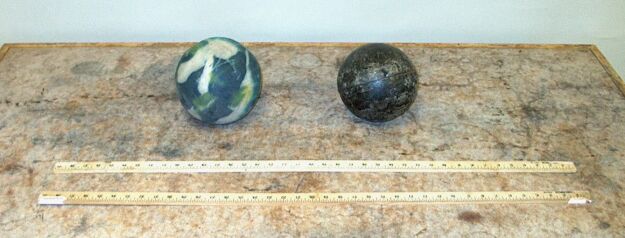

Place a plastic ball and a steel ball on the floor at one side of the lecture hall. Create a contest between two students to see who can get his ball to the other side of the lecture hall first by using only the meter stick to move the ball.
The plastic ball has a mass of approximately 190 g, and the steel ball has a mass of about 19.7 kg. The plastic ball thus has about one percent of the mass of the steel ball, and a correspondingly smaller tendency to stay at rest, or, once set in (straight line) motion, to stay in motion. Of course, this means that the tendency of the steel ball to stay at rest is about one hundred times that of the plastic ball (as its its tendency to continue straight-line motion). It is not difficult to predict the winner of this race! As expressed mathematically in Newton’s second law,
F = m(dv/dt) = ma,
or in scalar form,
F = ma,
from which we see that a = F/m. To give the steel ball the same acceleration as the plastic ball, then, requires a force that is about 100 times as great as that for the plastic ball. Put another way, a given force applied to each ball results in an acceleration for the plastic ball that is 100 times that for the steel ball.